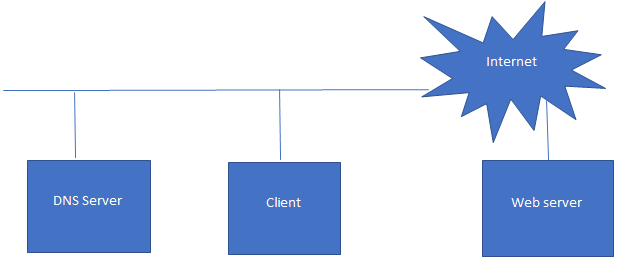What Is Networking Protocols | How Networking Protocol works?

Mục Lục
Introduction to Networking Protocols
Network protocols are a set of well-defined rules through which a user communicates over the internet or intranet. Both ends of the communication channel adhere to these rules for proper information exchange. Protocols are developed by industry-based people, research institutions, etc. and then once published and accepted by means of international conferences. These protocols are categorized on multiple bases; some are associated with the transport layer; some are associated with the network layer.
Understanding Networking Protocols
When we look to define the networking models, two kinds of layered models appear into the picture on which the roots of networking are laid –
Start Your Free Software Development Course
Web development, programming languages, Software testing & others
- OSI Model
- TCP/IP Model
The OSI model is a 7 Layer model which comprises of following layers handling their tasks :
- Application Layer
- Presentation Layer
- Session Layer
- Transport Layer
- Network Layer
- Data link layer
- Physical Layer
The TCP/IP model contains 4 Layers only in contrast to the OSI model, and they only handle the tasks:
- Application Layer
- Transport Layer
- Internet
- Network Access
- The application layer has the user’s data, handles the encoding mechanisms.
- The transport layer supports communication between the end devices.
- The Internet layer provides logical addressing.
- The network layer controls hardware devices like routers.
- The data link layer is responsible for mac addressing etc., and to communicate with the physical layer.
- The physical layer carries all stuff at the hardwired level.
Now let’s understand what an IP address is and the networking protocols associated with it.
The IP address is a decimal representation of binary numbers, unique in nature for each device such that it acts as an identity of the device connected to the network. There are two protocols put up in association with this, which are IPv4 and IPv6.
- In the IPv4 addressing, there are public and private IPs. The private IP is accessible inside the network, while the public IP is accessible throughout the internet.
How do Networking Protocols Work?
Here let’s first understand how DNS works:

Let’s understand what happens when you click at www.google.com; the client represents your system’s browser here from which you submit a request at the internet, once you hit this URL, the call via channel gets transported to the DNS server, and it asks a query “what is the address mapped against this URL ?” Now the DNS server has a cache installed; it is possible that it may have result already, or in the otherwise case, it will communicate with other DNS servers and return back an IP. So after the IP resolution, the request from the client reaches the web server of that host.
Types of Networking Protocols
Below are the different types of networking protocols, which are as follows:
1. IPv6
Refers to Internet Protocol version 6, is the future addressing format, as soon we can see the IPv4 addresses getting exhausted with a rising number of machines and the public IPs being structured up will go into version 6. It offers 3.4*10^34 unique combinations in which addressing can be done and hence could represent a large number of machines connected to the internet. Obviously, once it has to be introduced, the routing protocols and hardware may see ample changes in architecture.
2. IPv4
This is already an existing technique that we discussed above.
3. TCP/IP Protocols
The TCP/IP based protocols are further classified into the following:
a. Web Protocols
- HTTP – It stands for HyperText Transfer Protocol, the format of messages, transmission, and this protocol manages web actions associated at client and server-end. The Worldwide web uses it. It runs on port 80.
- HTTPS – It stands for HyperText Transfer Protocol Secure, so it seems to enhance HTTP only. This is used for secure communication; hence whenever you are out of the local host world, then go by this.
- TLS – It stands for Transport Layer Security; this is a cryptographic protocol that provides end to end communications security over networks, commonly used in transactions; the security is maintained by forgery prevention, data leak prevention, etc.
- SSL – It stands for Secure Sockets Layer, establishes an encrypted link between browser and server, the web server requires an SSL certificate. A public and a private key are created cryptographically.
b. File Transfer Protocols
- FTP – File Transfer Protocol is used for file transfer between client and server on a computer network.
- TFTP – Trivial File Transfer Protocol is how the client can get a file and put it into a remote host, the nodes that boot from LAN use it.
- SFTP – SSH File Transfer Protocol provides a secure connection to transfer files and traverse the file system on local and remote systems.
- FTPS – It’s a secure File Transfer Protocol; TLS support and SSL are added here; we are not using a secure shell-based protocol.
- SMB – Server Message Block, which is used by windows, allows computers within the same network to share files.
- NFS – Network File system is a distributed file system used in UNIX generally to access files among computers on the same network.
c. Email Protocols
- SMTP – Simple Mail Transfer Protocol is a push protocol to send an email, Post Office Protocol, or Internet Message Access Protocol, which is used to retrieve those at the receiver side. It is implemented at the application layer.
d. Management Protocols
- Telnet – It is used on the internet and LAN for bilateral text communication; it uses a virtual terminal connection.
- SSH – It is a secure shell-based remote login from one computer into another computer. Authentication and security can be taken care of too.
- SNMP – Simple Network Management Protocol is used for collecting and organizing information about devices in the network and modify the information.
e. Media Protocols
- RTP – Real-time transport protocol is used for audio and video communication over the network.
- RTSP – Real-time streaming protocol is a protocol for streaming; it establishes media sessions between endpoints.
Conclusion
We took a superficial idea of the kind of network protocols available and what they have to offer us. How DNS server works and helps address resolution, IPv4, IPv6, and some other protocols were discussed.
Recommended Articles
This has been a guide to What is Networking Protocols. Here we discussed the concepts, different types of Networking Protocols. You can also go through our other suggested article to learn more –
0
Shares
Share















![Toni Kroos là ai? [ sự thật về tiểu sử đầy đủ Toni Kroos ]](https://evbn.org/wp-content/uploads/New-Project-6635-1671934592.jpg)


